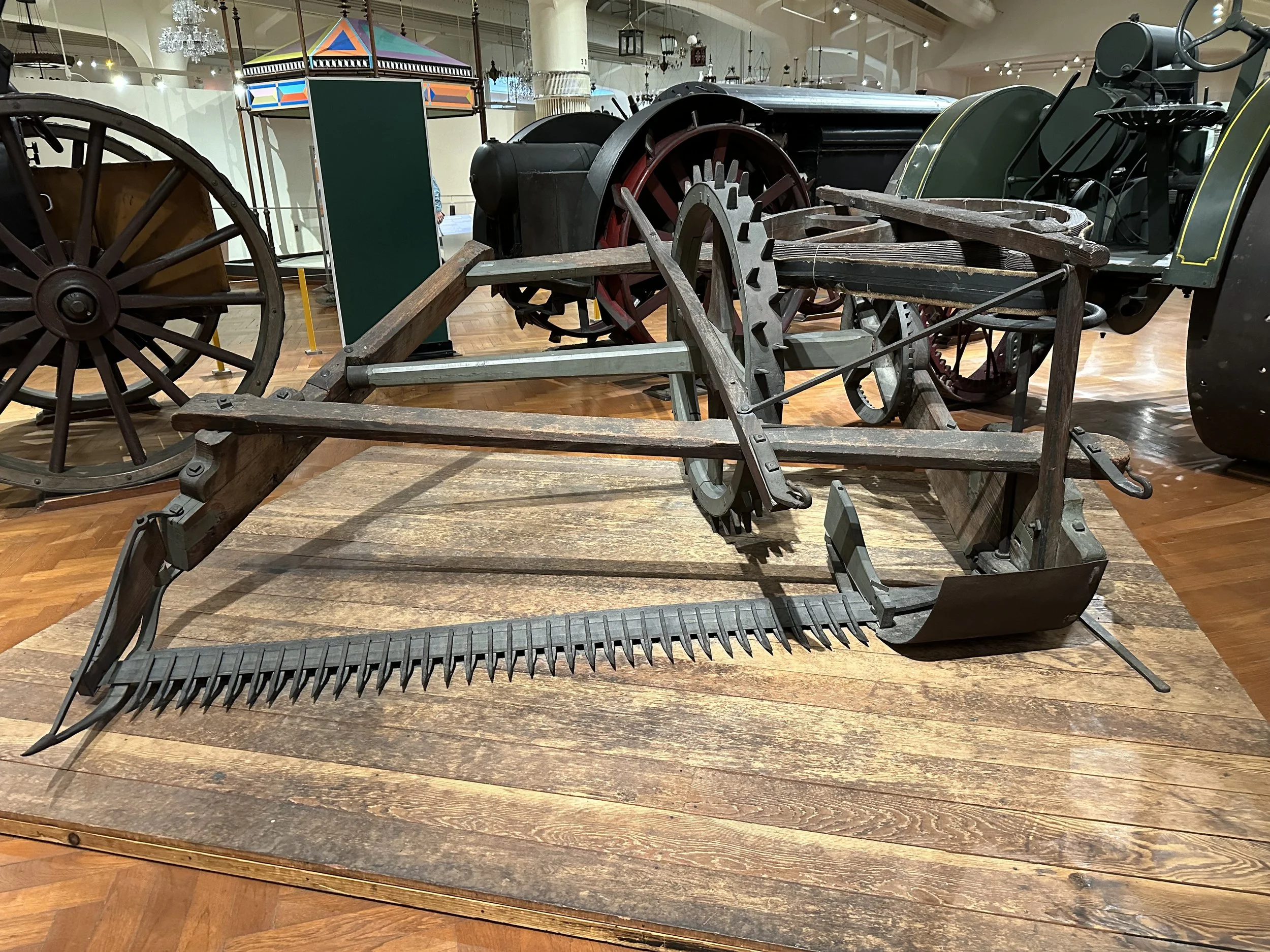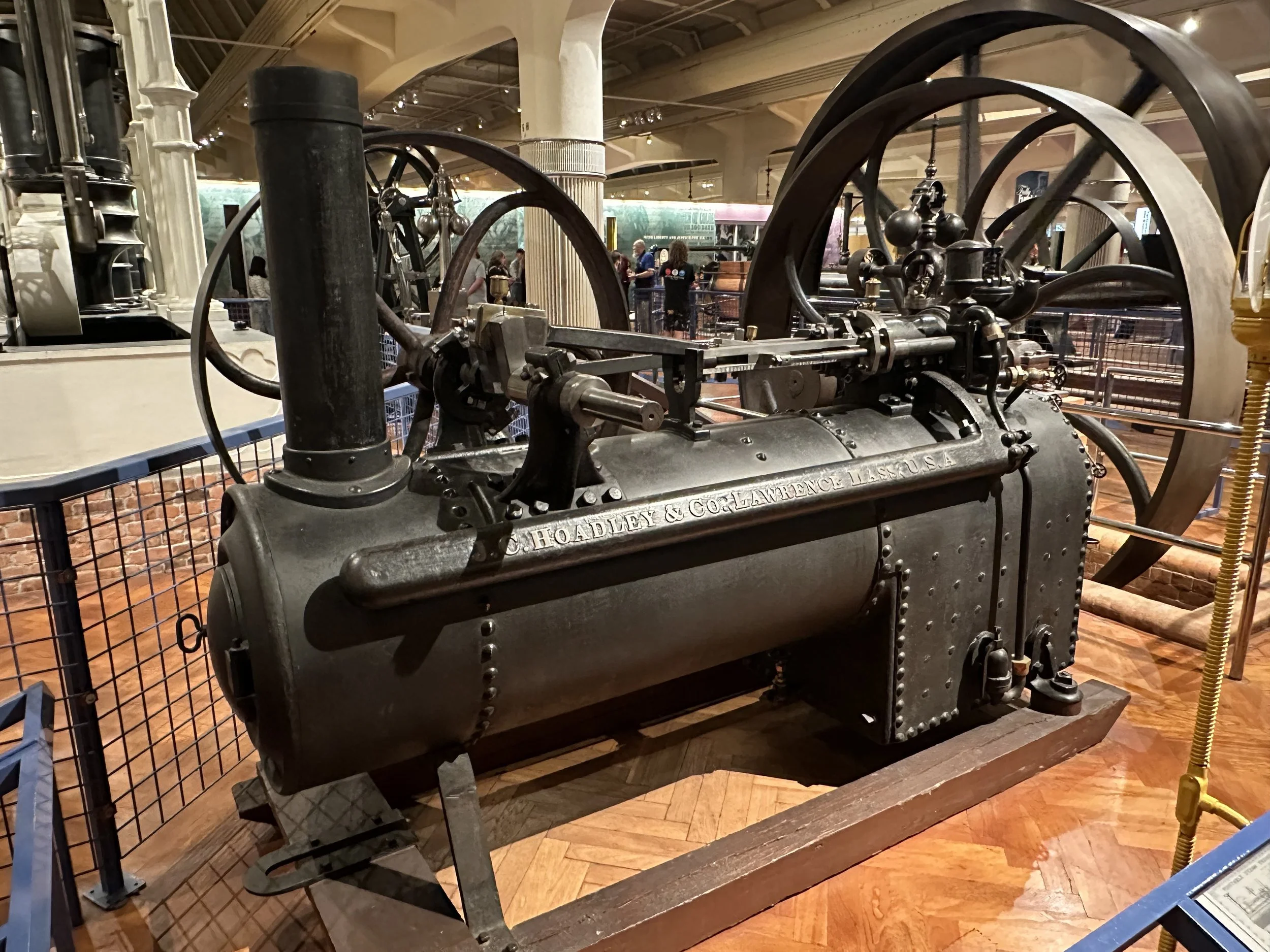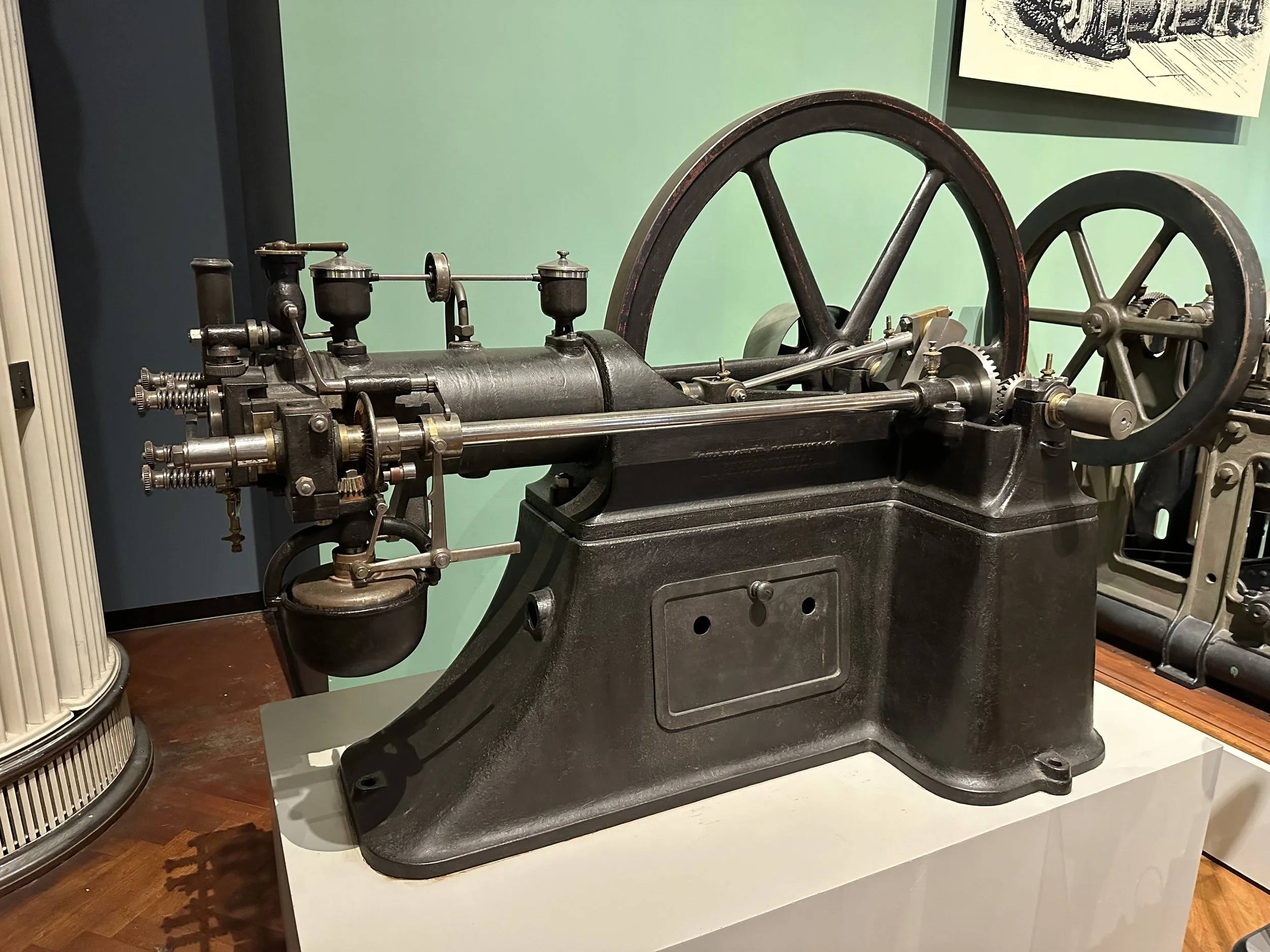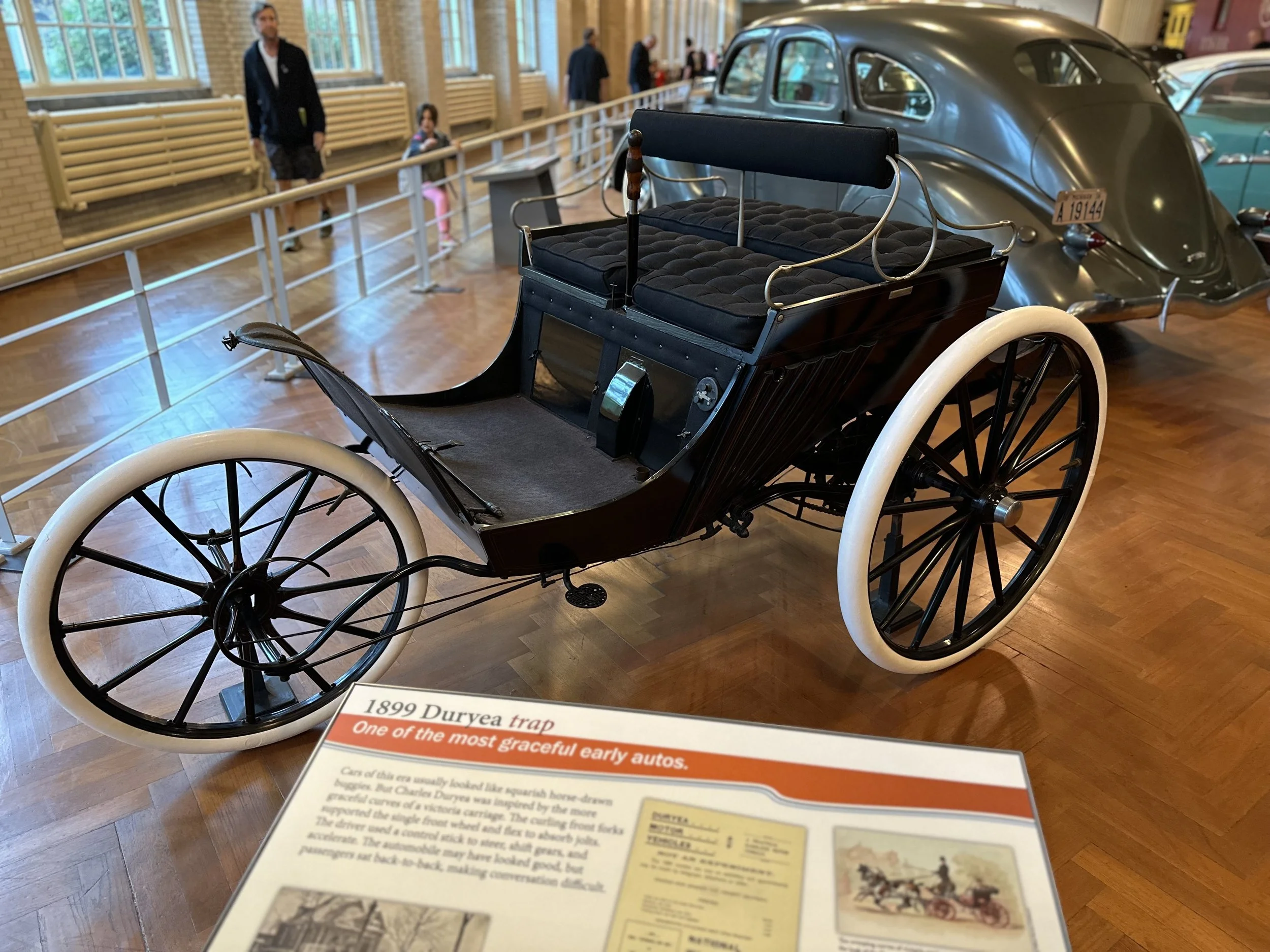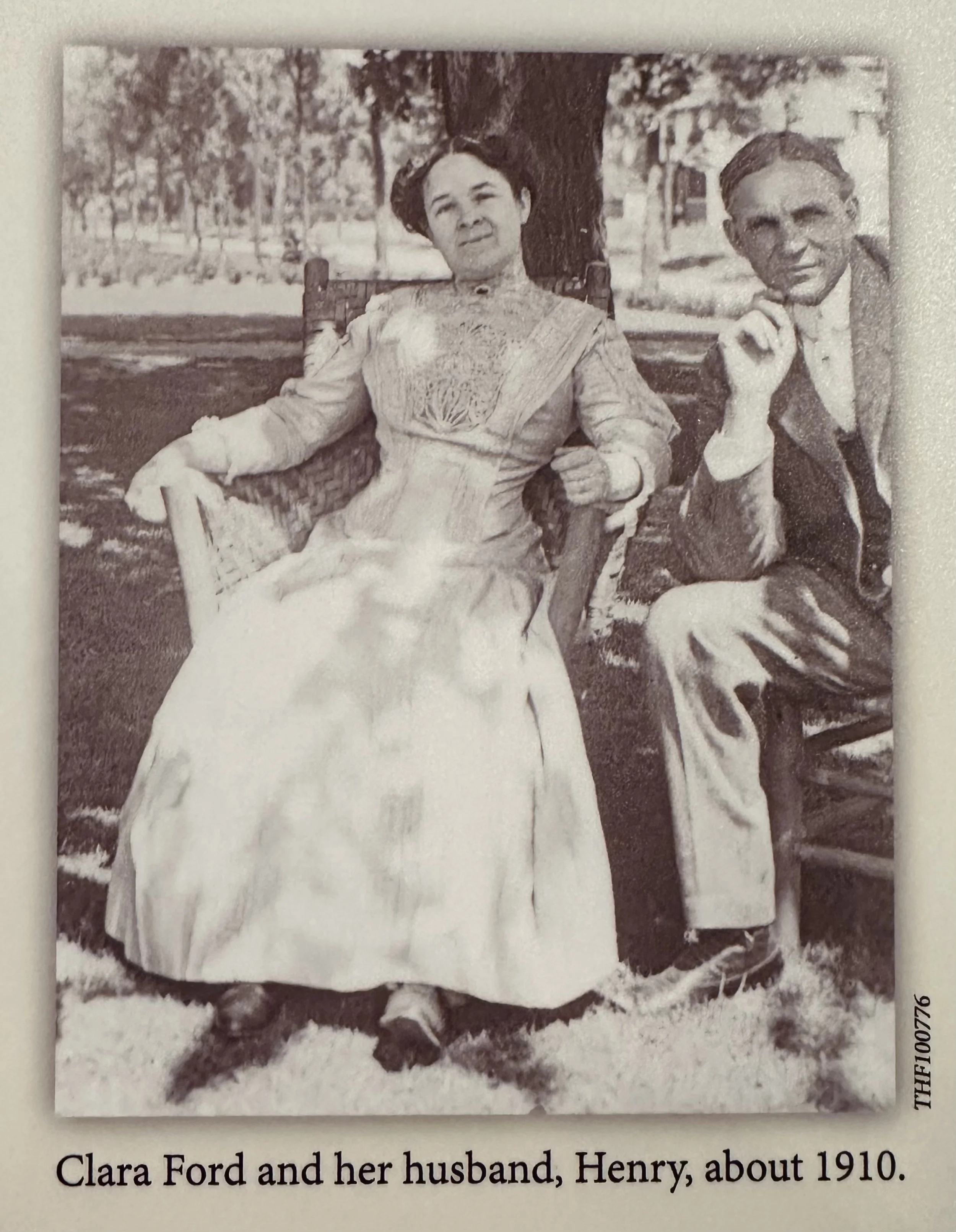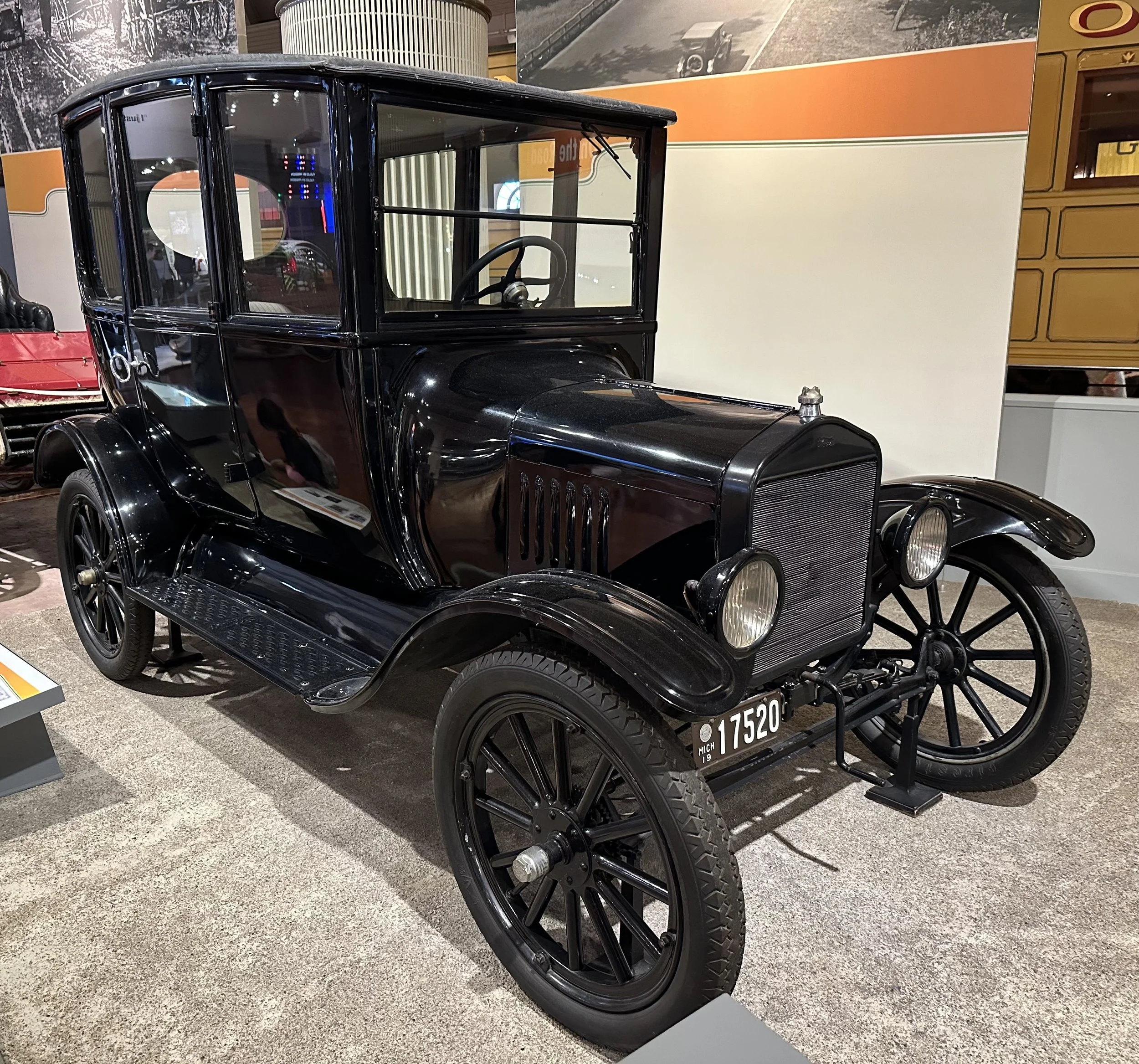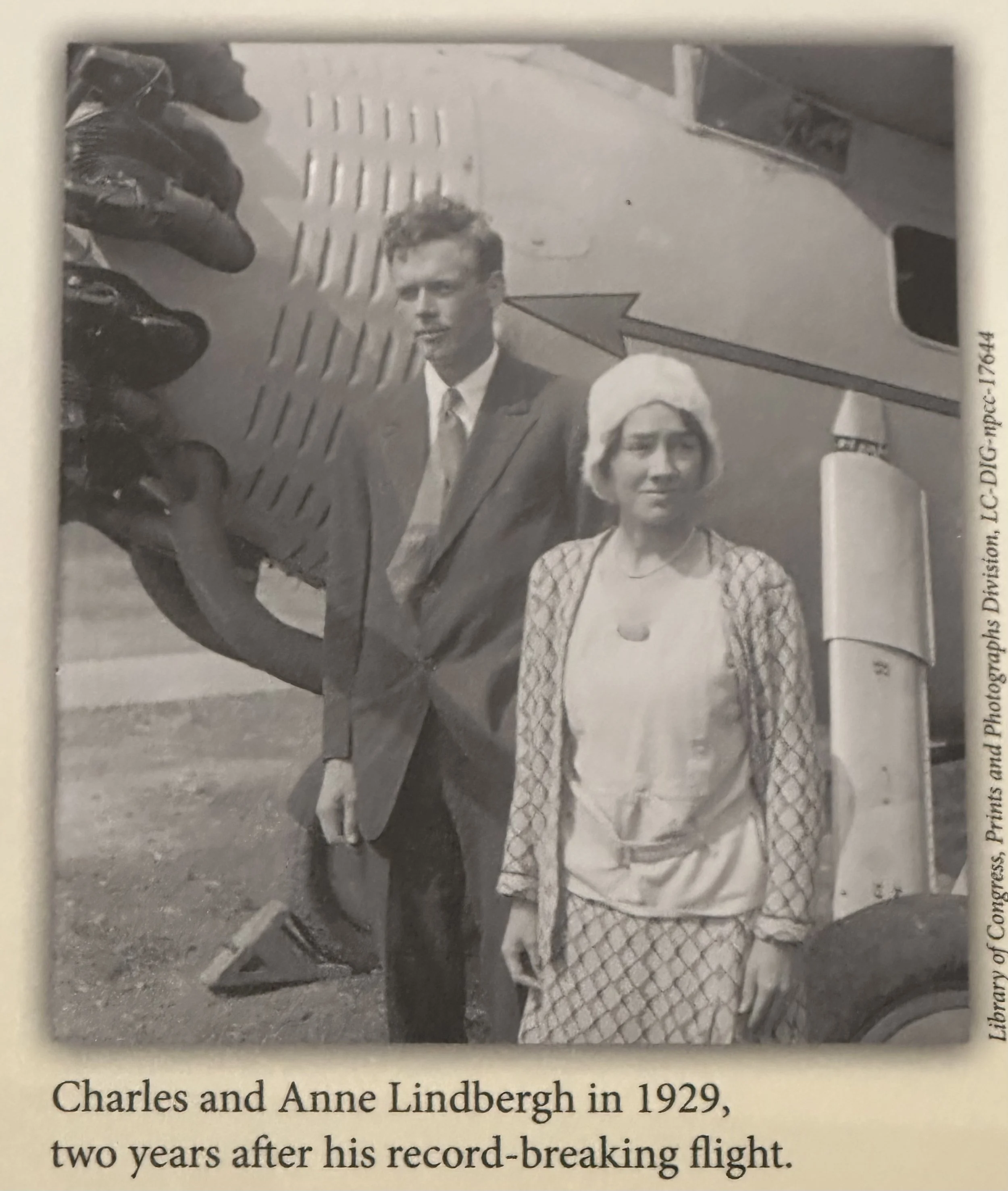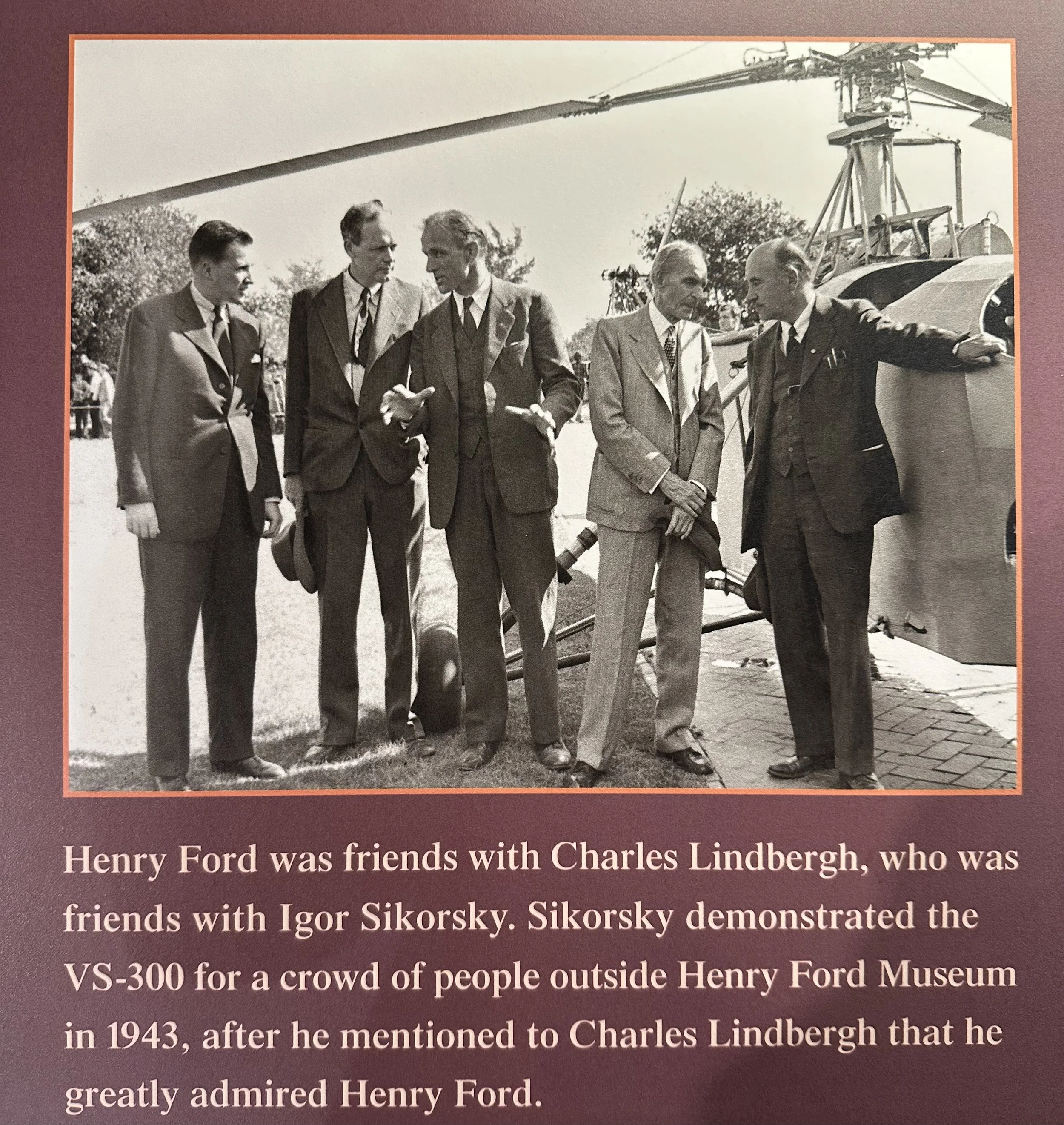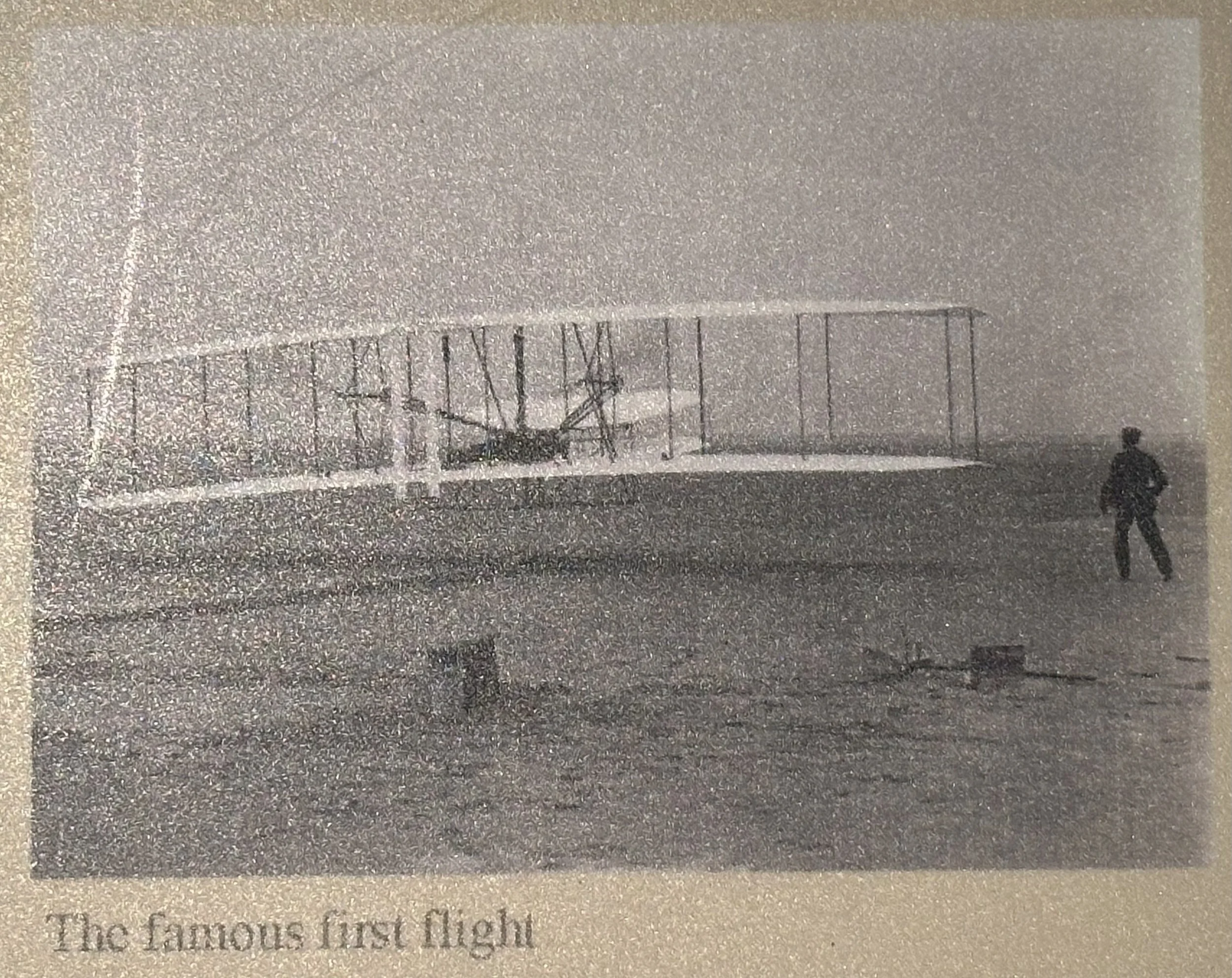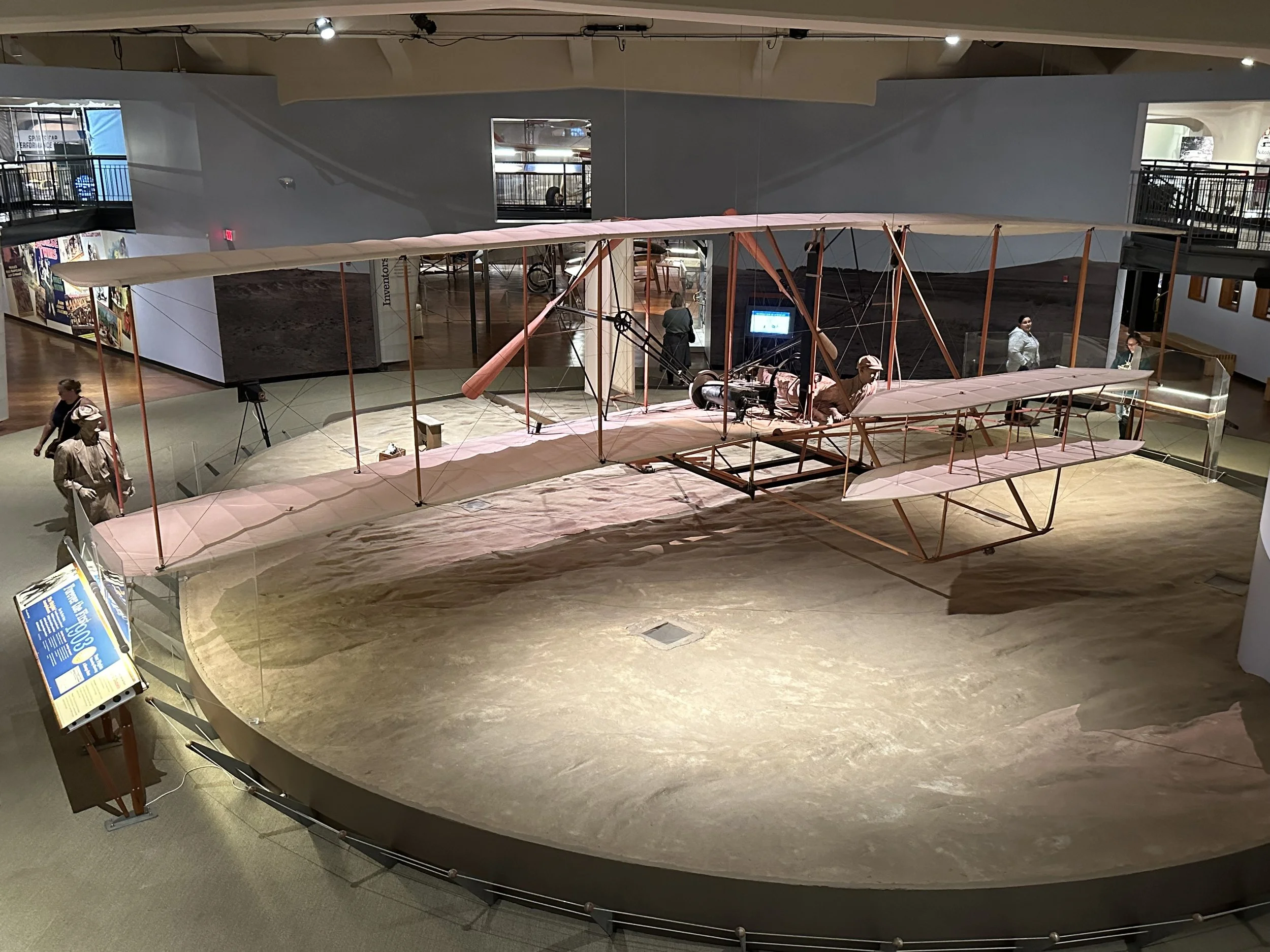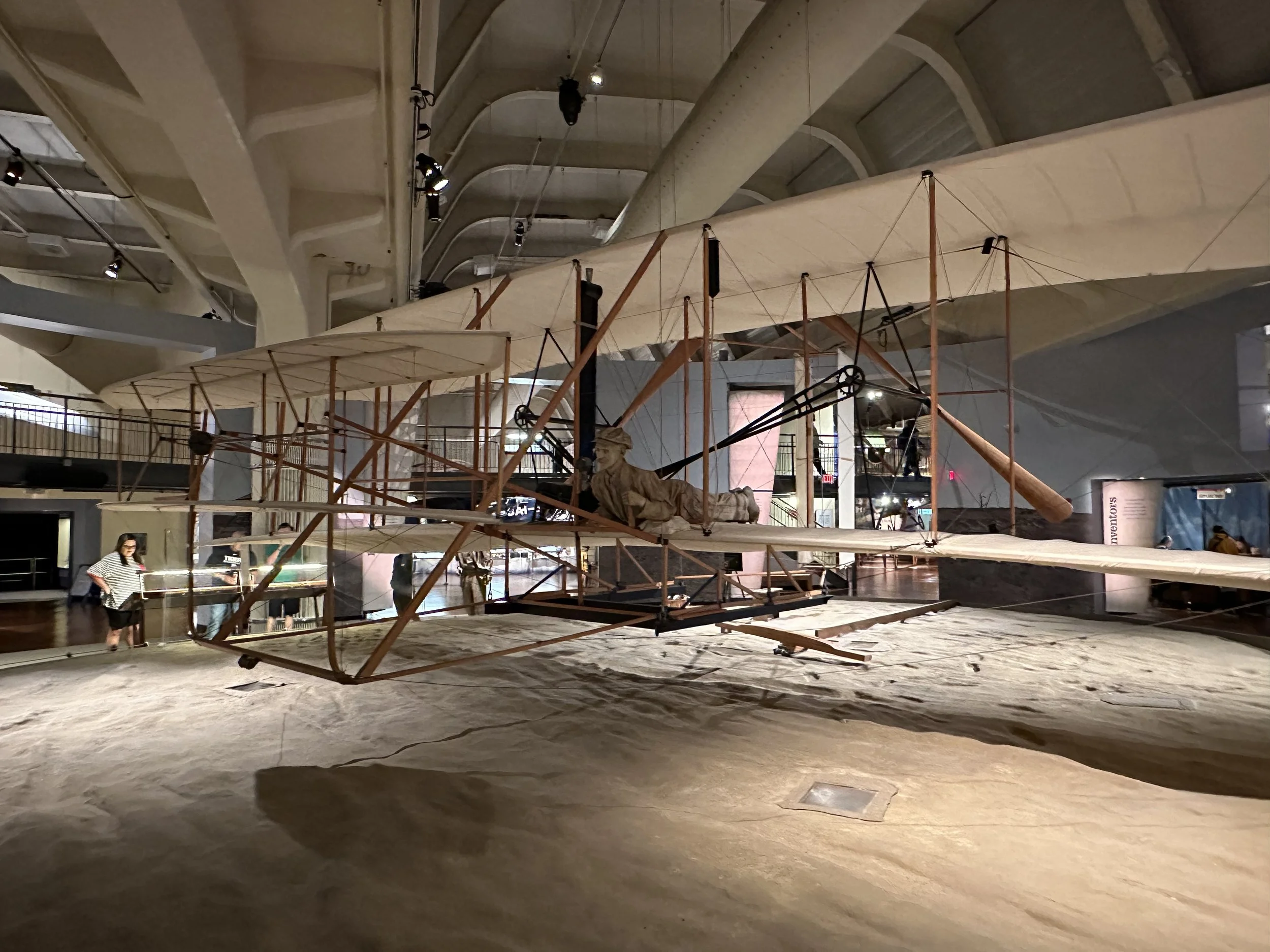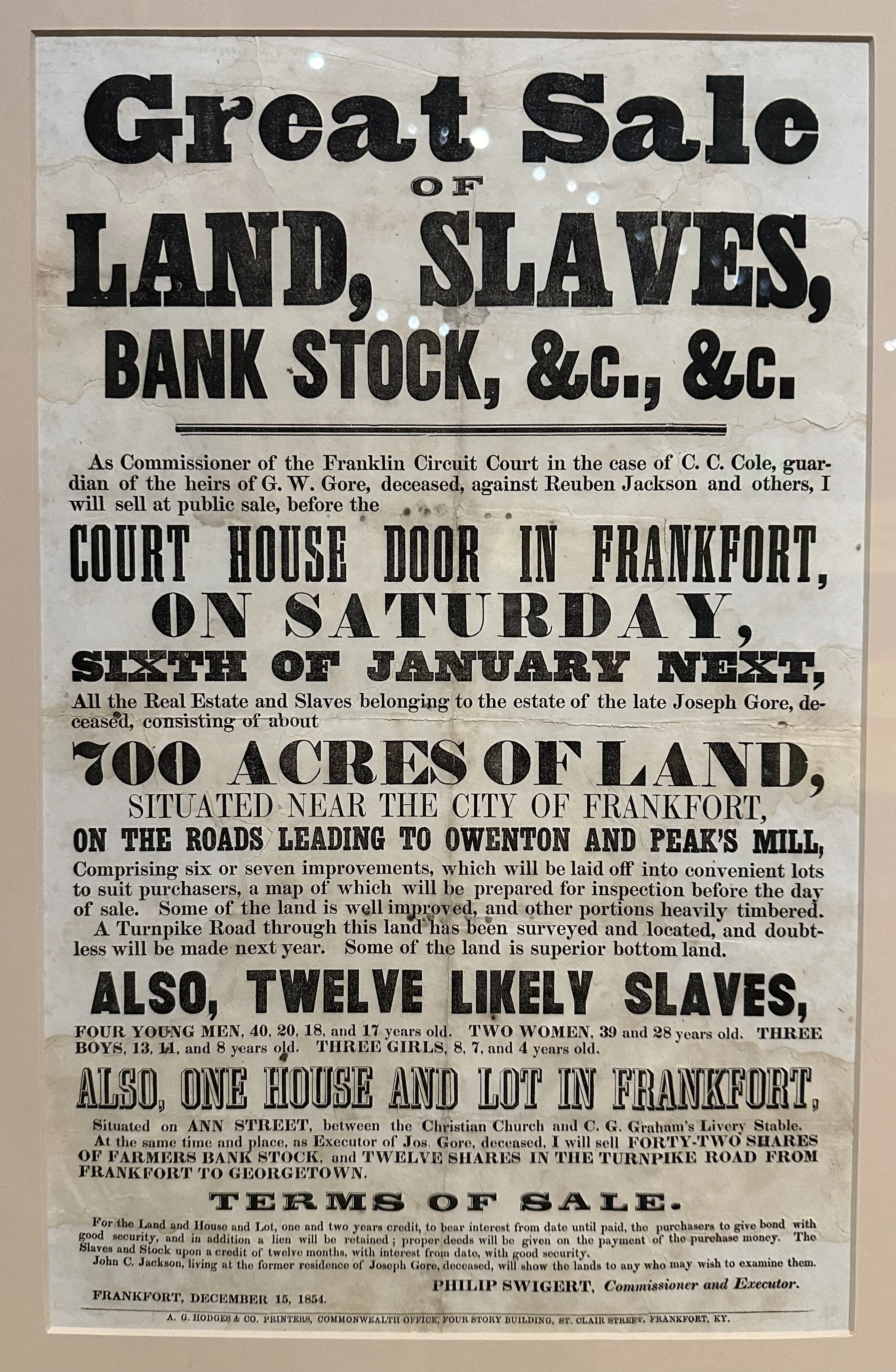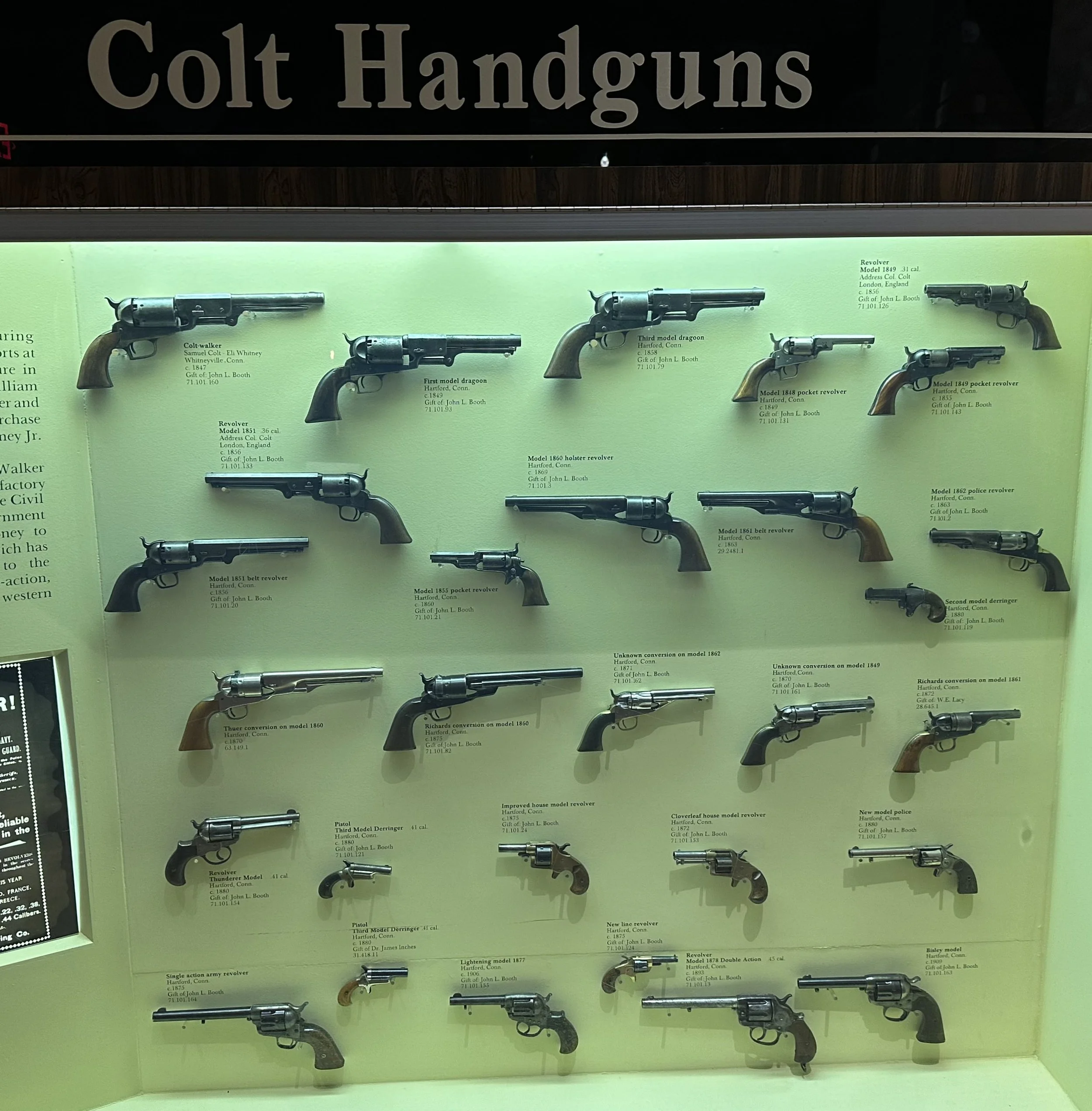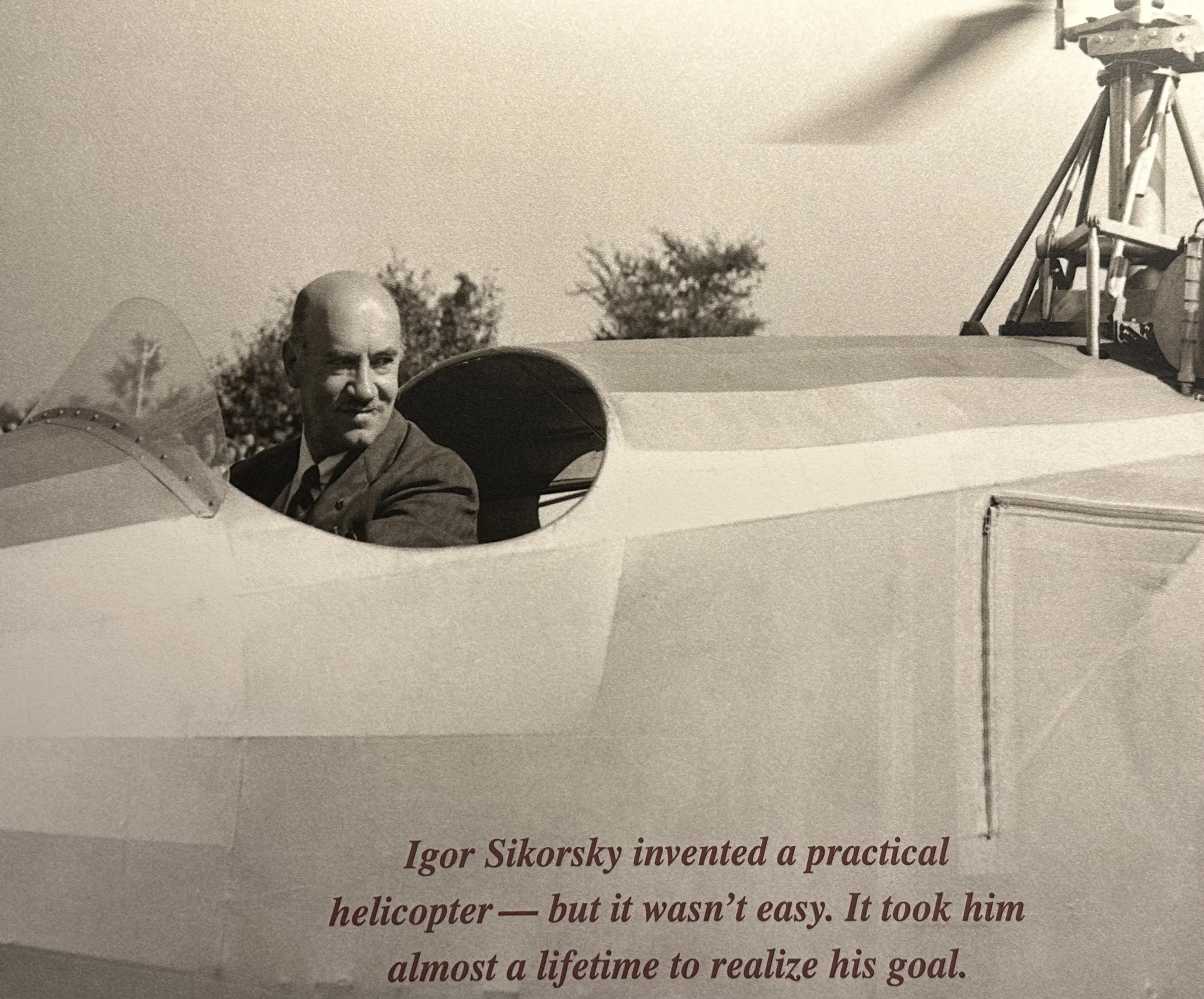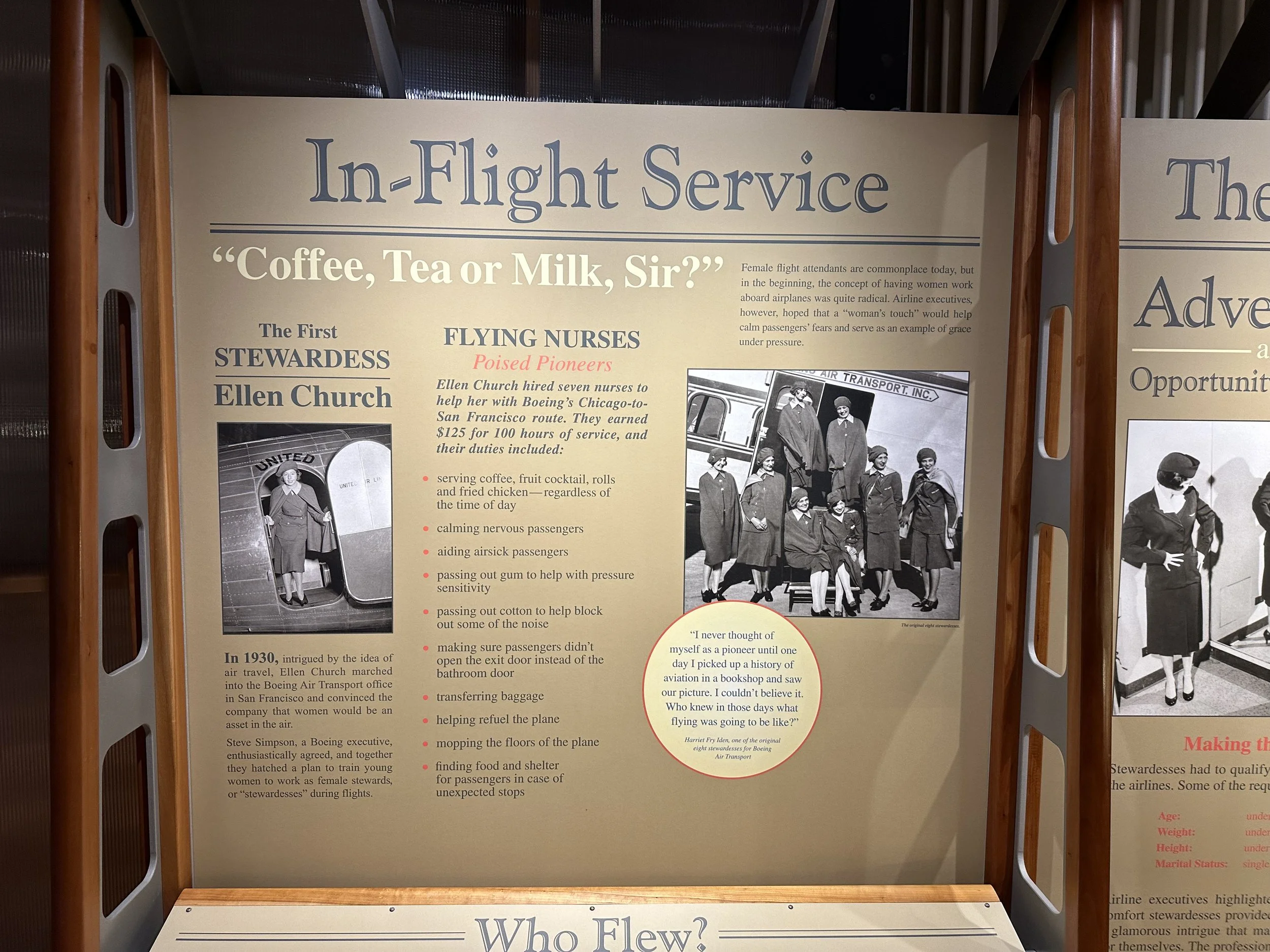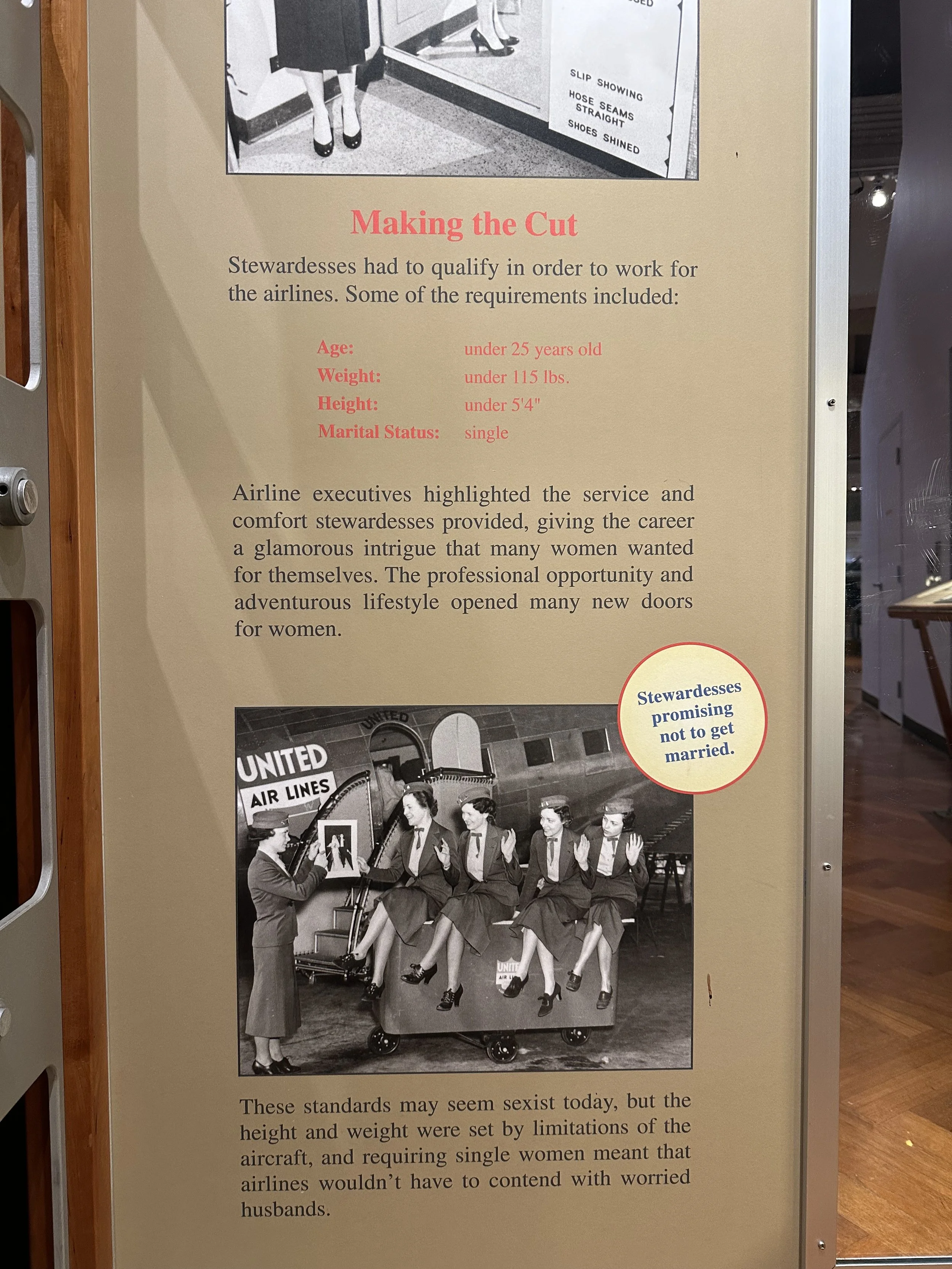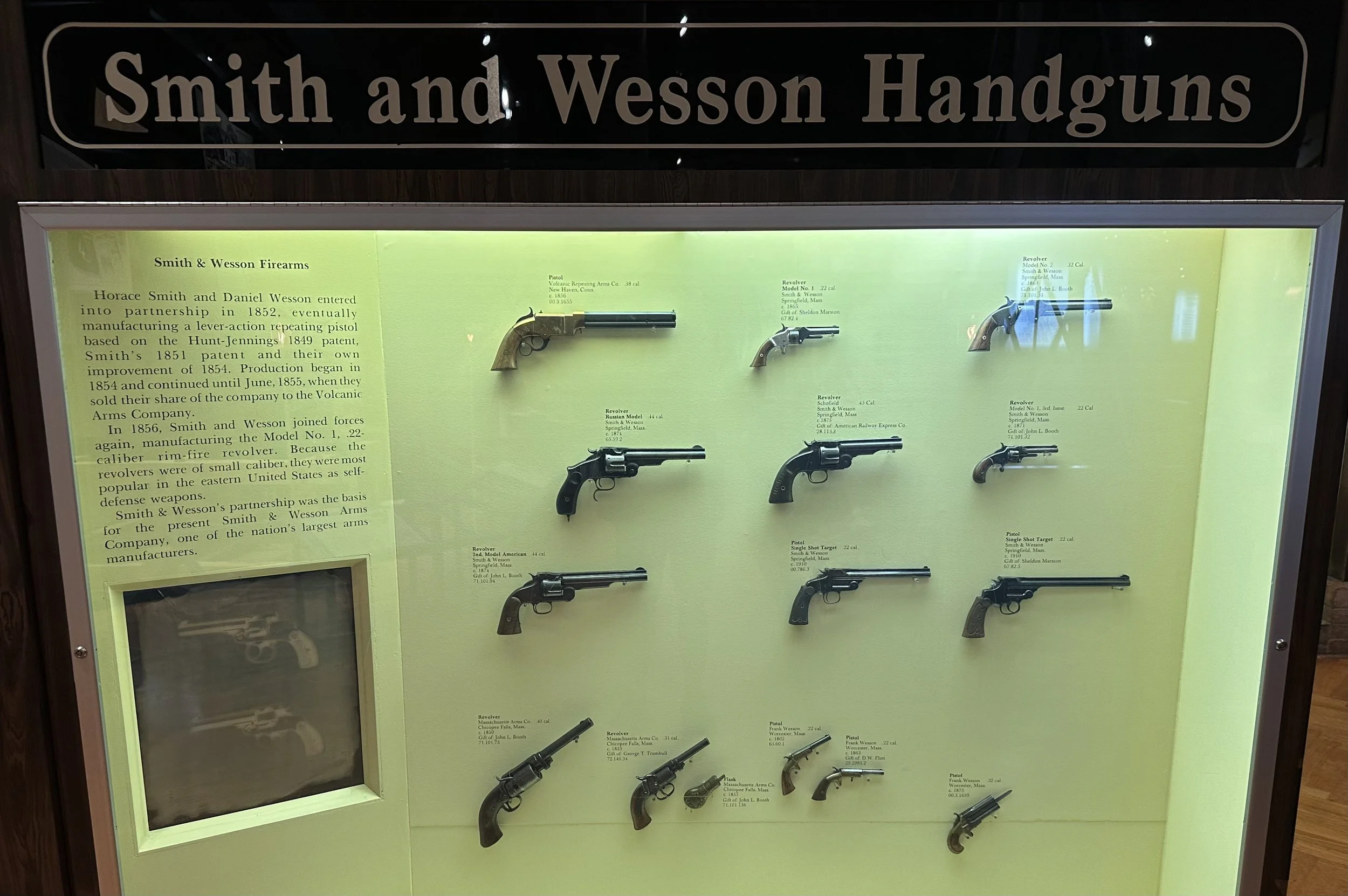The Henry Ford Museum
Dearborn, MI
___________________________________________________________________________
Chronology
1994: Eurostar begins rail service between France and England through the Channel Tunnel (Henry Ford Museum).
1993: Mosaic, the first world wide web browser, is developed at the U. of Illinois (Henry Ford Museum).
1992: The acquittal of four police officers on charges of beating motorist Rodney King triggers riots in Los Angeles (Henry Ford Museum).
1988: Prozac, an antidepressant drug, is introduced (Henry Ford Museum).
1988: Pan American Airways Flight 103 explodes over Lockerbie, Scotland, killing 258 on board and 11 on the ground. Two Libyans are charged with planting the explosives that destroyed the plane (Henry Ford Museum).
1987: Caught between falling prices for agricultural commodities and high interest rates, nearly 240K American farmers give up farming (Henry Ford Museum).
1985: Nintendo video games are introduced (Henry Ford Museum).
1984: A chemical leak at a Union Carbide plant in Bhopal, India, kills 3500 people (Henry Ford Museum).
1984: Apple introduces the Macintosh (Henry Ford Museum).
1983: The compact disc (CD) is introduced (Henry Ford Museum).
1979: The Sony Walkman, the first personal stereo, is introduced (Henry Ford Museum).
1977: The Apple II and Commodore PET computers are introduced (Henry Ford Museum).
1974: Atari introduces “Pong”, the first home video game (Henry Ford Museum).
Oct, 1973: The Arab nations of OPEC stop shipping oil to the US in response to America’s military aid to Israel during the 1973 Arab-Israeli (Yom Kippur) War. The five-month oil embargo caused an energy crisis, forcing Americans to recognize their passion for driving depended on the flow of foreign oil (Henry Ford Museum).
1974: The USG passes the National Maximum Speed Law, which reduces highway speed limits to 55 mph nationwide to reduce gasoline consumption (Henry Ford Museum).
1971: The microprocessor is developed, enabling computers to become smaller and cheaper (Henry Ford Museum).
1971: The USG passes the 26th amendment, giving 18-year-olds the right to vote (Henry Ford Museum).
1970: National guardsmen fire on anti-war demonstrators at Kent State U. in Ohio, killing four students (Henry Ford Museum).
1970: IBM introduces the floppy disk for data storage (Henry Ford Museum).
1967: Boeing introduces the 737 (Henry Ford Museum).
1967: Christiaan Barnard of South Africa performs the first heart transplant (Henry Ford Museum).
1965: Cesar Chavez organizes a farm workers’ union and leads a strike for better wages and working conditions. Using the nonviolent tactics of the Civil Rights Movement, he draws national attention to the plight of farm workers in CA and across the West (Henry Ford Museum).
1963: Betty Friedan’s book “The Feminine Mystique” sparks the modern feminist movement (Henry Ford Museum).
1962: John Glenn becomes the first American to orbit Earth (Henry Ford Museum).
1960: Aluminum is first used for beverage containers (Henry Ford Museum).
1960: The US FDA approves “the pill’, the first effective oral contraceptive, igniting the sexual revolution of the 1960s (Henry Ford Museum).
1958: The American Express card and Bank Americard (Visa) are introduced (Henry Ford Museum).
1958: Stereo records are introduced (Henry Ford Museum).
1958: The British Overseas Airways Corporation (BOAC) begins passenger jet service from London to New York (Henry Ford Museum).
1958: The US launches its first satellite, Explorer 1 (Henry Ford Museum).
1957: Smith-Corona introduces the portable electric typewriter (Henry Ford Museum).
1957: The Treaty of Rome establishes the European Economic Community (Henry Ford Museum).
1954: Swanson introduces the frozen TV dinner (Henry Ford Museum).
1954: Jonas Salk’s polio vaccine is tested on 400K children in the US (Henry Ford Museum).
1945: Penicillin is introduced on a commercial basis (Henry Ford Museum).
1941: The aerosol can is developed (Henry Ford Museum).
1940: The first McDonalds hamburger stand opens in Pasadena, CA (Henry Ford Museum).
1940: The automatic transmission is developed by Oldsmobile (Henry Ford Museum).
1939: Douglas introduces the DC-3 airplane (Henry Ford Museum).
1933: FDR passes the “New Deal” during the Great Depression creating several new agencies to hire Americans and revitalize the country, including the AAA which aids farmers, the TVA which builds dams and hydroelectric plants, and the REA, which electrifies the countryside (Henry Ford Museum).
1930: Intrigued by the idea of air travel, Ellen Church convinces Boeing to train young women to work as female stewards, or “stewardesses” during flights (Henry Ford Museum).
1928: Professor Alexander Fleming discovers that a certain mold could dissolve bacteria; he names it “penicillin” (Henry Ford Museum).
1928: Mickey Mouse first appears in Steamboat Willie (Henry Ford Museum).
1928: The Columbia Broadcasting system (CBS) is founded (Henry Ford Museum).
1927: Charles Lindbergh flies non-stop from NY to France, the first to cross the Atlantic by plane (Henry Ford Museum).
1927: Transatlantic telephone service begins (Henry Ford Museum).
1926: The National Broadcasting Company (NBC) is founded (Henry Ford Museum).
1926: The first liquid-fueled rocket is launched in the US (Henry Ford Museum).
1923: The Frigidaire electric refrigerator is first marketed (Henry Ford Museum).
1923: Time magazine begins publication (Henry Ford Museum).
1922: The Irish Free State (Rep. of Ireland) is established (Henry Ford Museum).
1922: Insulin is first used to treat diabetes in humans (Henry Ford Museum).
1922: Grauman’s Chinese Theater becomes the first air-conditioned building (Henry Ford Museum).
1920: The first two commercial radio broadcasts take place at WWJ in Detroit, Michigan, and KDKA in Pittsburg, PA (Henry Ford Museum).
1919: After immigrating to the US, Igor Sikorsky begins a research project for United Aircraft. His VS-300 with a single-rotor design and control arrangement becomes the standard for 90% of all helicopters that follow (Henry Ford Museum).
1911: Swiss Immigrant Louis Chevrolet co-founds Chevrolet Motor Company with William Durant (Henry Ford Museum).
1909: The electric toaster is introduced (Henry Ford Museum).
25 Jul, 1909: French aviator Louis Blériot makes the first crossing of the 22-mile English Channel by plane (Henry Ford Museum).
1909: After watching Orville Wright fly, Donald Douglas quits the US Naval Academy and begins studying aeronautical engineering (Henry Ford Museum).
1909: The Anglo-Persian Oil company is founded; the first Middle Eastern oil company (Henry Ford Museum).
1907: Immigration from Europe to the US peaks (Henry Ford Museum).
1907: New York City horsecars give way to motorbuses (Henry Ford Museum).
1906: The USG passes the widely supported Pure Food Bill; the first law regulating the production of processed food and manufactured drugs (Henry Ford Museum).
1904: The New York City subway first opens (Henry Ford Museum).
Dec, 1903: Orville and Wilbur Wright fly at Kitty Hawk, NC (Henry Ford Museum).
1900: Eastman Kodak’s Brownie camera is introduced (Henry Ford Museum).
1895: Westinghouse Electric Co. introduces the AC Generator. AC had a technical advantage over DC because it could be transmitted over long distances, meaning that fewer AC generating stations were needed (Henry Ford Museum).
1893: General Electric Co. introduces the Electric Motor (Henry Ford Museum).
1892: The first gasoline-fueled tractor is developed. At the time, 40% of the US population lived on farms (Henry Ford Museum).
1890: The electrical junction box is developed as a watertight cast-iron box used to join together two sets of wires underground (Henry Ford Museum).
1887: Westinghouse Electric Co. introduces the Electrical Transformer, which allows alternating current to be transmitted over long distances at very high voltages, and then reduced to lower, safer voltages for use in homes and factories (Henry Ford Museum).
1877: Nikolaus Otto invents the Otto Engine. His four-stroke engine evolves into today’s gasoline-powered automobile engine (Henry Ford Museum).
1878: George Brayton invents the Brayton Kerosene Engine (Henry Ford Museum).
1878: William Sawyer introduces the Sawyer-Man lamp, an early incandescent electric light bulb (Henry Ford Museum).
1852: Horace Smith and Daniel Wesson enter into a partnership, eventually manufacturing a lever-action repeating pistol based on the Hunt-Jennings 1849 patent, Smith’s 1851 patent, and their own improvement of 1854 (Henry Ford Museum).
1852: Harriet Beecher Stow pens “Uncle Toms Cabin”- a best-selling story about the plight of Southern slaves (Henry Ford Museum).
19-20 Jul, 1848: Seneca Falls Convention; Elizabeth Cady Stanton and Lucretia Mott host a Woman’s Rights Convention (Henry Ford Museum).
1836: Samuel Colt begins manufacturing firearms (Henry Ford Museum).
1828: White Minstrel performer Thomas D. Rice popularizes his folk character “Jim Crow” (Henry Ford Museum).
~1788: British inventor James Watt invents the Watt Rotative Steam Engine (Henry Ford Museum).
1710: Thomas Newcomen’s practical steam engine is invented for the purpose of pumping water out of deep mines (Henry Ford Museum).
___________________________________________________________________________



